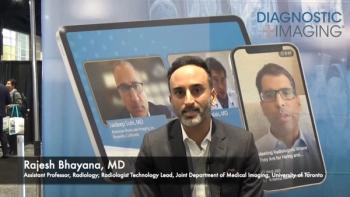
GE unveils 3T and 1.5T scanners
GE Healthcare played to high-field enthusiasts visiting the RSNA exhibit floor Sunday, unveiling three MR scanners – one at 3T and two at 1.5T.
GE Healthcare played to high-field enthusiasts visiting the RSNA exhibit floor Sunday, unveiling three MR scanners - one at 3T and two at 1.5T.
The Signa HDx 3T and Signa HDx 1.5T are built on a 32-channel architecture and support advanced clinical applications, including PROPELLER for motion-resistant brain imaging, VIBRANT-XV breast scanning, LAVA-XV body imaging, and TRICKS-XV time-resolved angiography. The Signa HDe, a value-driven 1.5T scanner, comes in four- and eight-channel configurations, and sports a small footprint for easy installation.
The 3T and premium 1.5T systems feature a new XVRE reconstruction engine; advanced parallel imaging algorithms; new acquisition strategies; and an interlocking, high-density head, neck, and spine coil system.
Signa HDx 3T utilizes high-density coils developed for the company's previously launched HD 3T system, which will remain in the GE line-up. New this year is the Signa HD breast coil, which supports multi-dimensional parallel imaging and biopsy capability, and a high-density hybrid extremity coil.
Signa HDx takes the flagship position in GE's 1.5T portfolio. It utilizes a Signa HD peripheral vascular lower leg array, which provides images of the lower leg and foot vessels.
The value-oriented Signa HDe 1.5T builds on the high definition platform, but offers lower operating costs and requires less overall siting space. With a 30% smaller footprint than a typical 1.5T system, the scanner can be sited where most 1.5T MR systems cannot, according to the company. Installation can be performed in about one week.
Newsletter
Stay at the forefront of radiology with the Diagnostic Imaging newsletter, delivering the latest news, clinical insights, and imaging advancements for today’s radiologists.




























